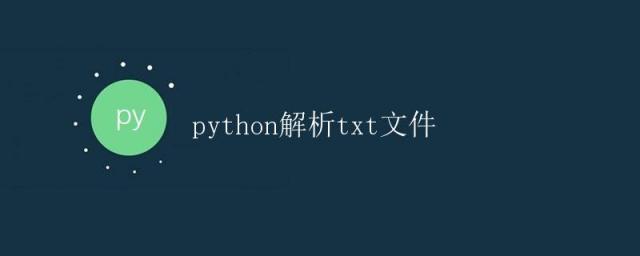Python解析txt文件
2024年07月05日 Python解析txt文件 极客笔记
Python解析txt文件

在日常工作和学习中,我们经常会遇到需要读取和处理txt文件的情况。而Python作为一种简单易学的编程语言,提供了丰富的库和工具,使得解析txt文件变得轻而易举。本文将详细介绍如何使用Python来解析txt文件,包括读取、处理和分析txt文件中的内容。
读取txt文件
在Python中,我们可以使用内置的open()函数来打开并读取txt文件。下面是一个简单的示例代码,演示了如何读取一个名为example.txt的txt文件:
filename = 'example.txt'
with open(filename, 'r') as file:
content = file.read()
print(content)
上面的代码中,我们首先指定了要读取的文件名example.txt,然后使用open()函数以只读模式打开文件。接着我们使用file.read()方法将文件内容读取到content变量中,并最后打印出文件内容。请确保example.txt文件存在于当前工作目录中。
分析txt文件内容
一旦我们成功读取了txt文件的内容,就可以对其进行各种处理和分析。下面是一些常见的操作示例:
1. 统计文件行数
我们可以使用readlines()方法来获取文件中的所有行,并通过计算行数来统计文件的行数。以下代码演示了如何统计example.txt文件的行数:
with open(filename, 'r') as file:
lines = file.readlines()
num_lines = len(lines)
print(f'Number of lines in {filename}: {num_lines}')
2. 查找特定内容
有时候我们需要在文件中查找特定的内容,可以使用in关键字来判断内容是否存在。以下代码展示了如何查找example.txt文件中是否包含Python关键字:
search_word = 'Python'
if search_word in content:
print(f'{search_word} found in {filename}')
else:
print(f'{search_word} not found in {filename}')
3. 统计单词出现次数
我们也可以统计文件中每个单词的出现次数,可以使用collections模块中的Counter类。以下代码展示了如何统计example.txt文件中每个单词的出现次数:
from collections import Counter
import re
# 使用正则表达式分割单词
words = re.findall(r'\w+', content.lower())
word_counts = Counter(words)
print('Word counts:')
for word, count in word_counts.items():
print(f'{word}: {count}')
4. 提取特定内容
有时候我们希望从文件中提取特定格式的内容,可以使用正则表达式来进行匹配。以下代码演示了如何从example.txt文件中提取所有的邮箱地址:
emails = re.findall(r'[\w\.-]+@[\w\.-]+', content)
print('Email addresses:')
for email in emails:
print(email)
运行结果
假设example.txt文件内容如下:
Hello, this is an example text file.
It contains some words like Python, programming, and code.
You can contact me at example@email.com for any questions.
运行上面的示例代码,我们可以得到以下结果:
Hello, this is an example text file.
It contains some words like Python, programming, and code.
You can contact me at example@email.com for any questions.
Number of lines in example.txt: 3
Python found in example.txt
Word counts:
hello: 1
this: 2
is: 1
an: 1
example: 1
text: 1
file: 1
it: 1
contains: 1
some: 1
words: 1
like: 1
python: 1
programming: 1
and: 2
code: 1
you: 1
can: 1
contact: 1
me: 1
at: 1
email: 1
com: 1
for: 1
any: 1
questions: 1
Email addresses:
example@email.com
以上即是使用Python解析txt文件的详细教程。
本文链接:http://so.lmcjl.com/news/7866/